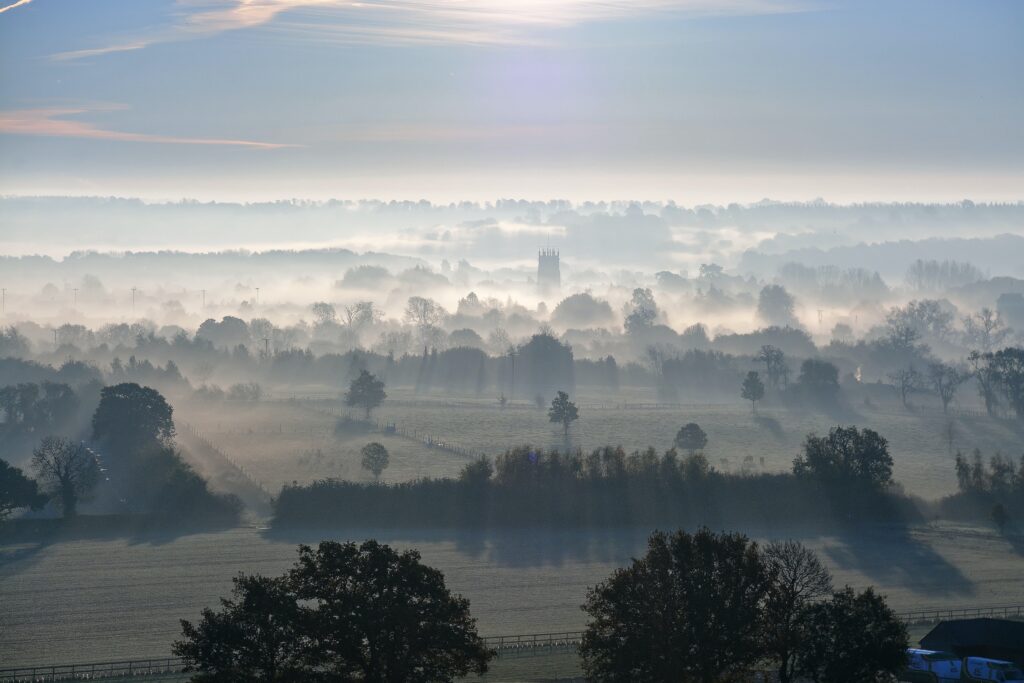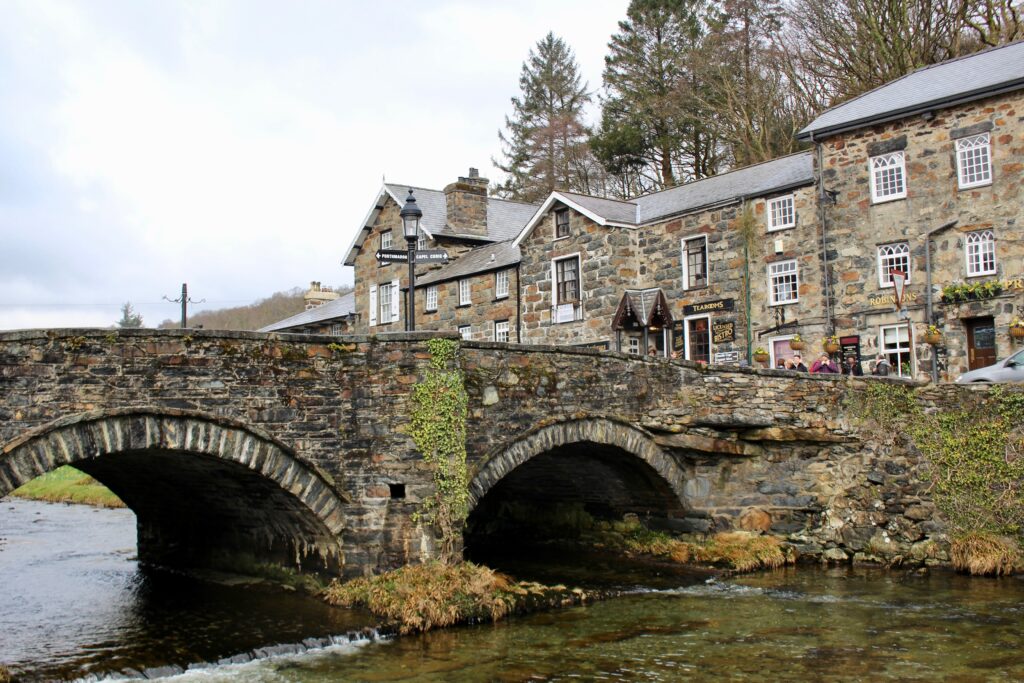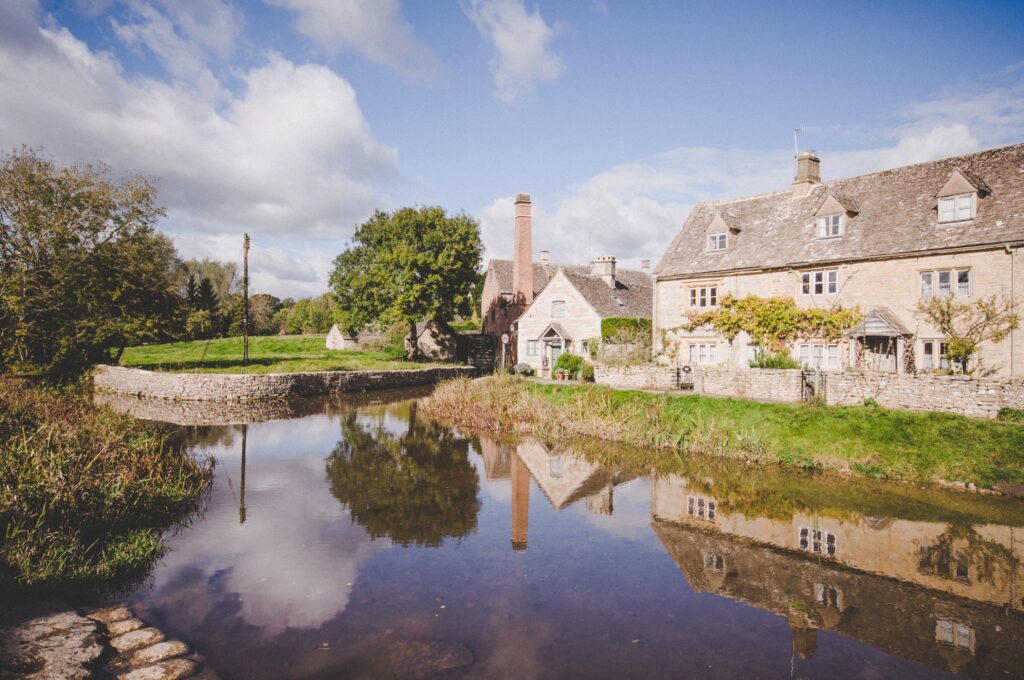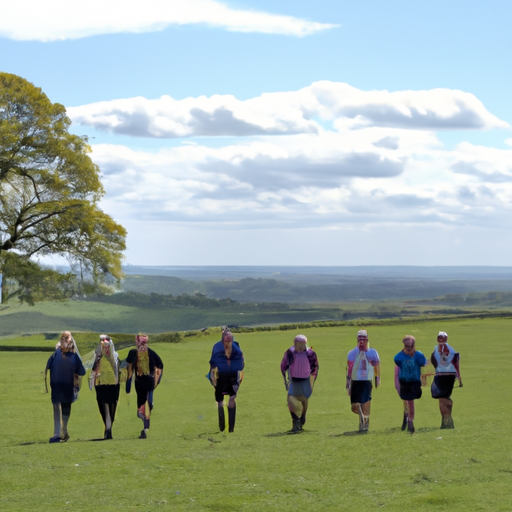Imagine embarking on a picturesque journey through the enchanting landscapes of the Cotswolds Way, but you find yourself pondering, “How long does it take to walk the entire Cotswolds Way?” Well, your curiosity ends here. In this article, we will explore the average time it takes to complete this awe-inspiring trail, allowing you to plan your adventure with confidence and anticipation. So lace up your hiking boots, because an exciting exploration awaits you along the Cotswolds Way.

Planning your walk
Choosing the right time of year
When planning your walk along the Cotswolds Way, it’s important to consider the time of year. The Cotswolds region boasts stunning landscapes and charming villages all year round, but the weather conditions can vary greatly depending on the season. Spring and autumn are popular times to walk the Cotswolds Way as the weather tends to be mild, and the countryside is adorned with beautiful blossoms or vibrant autumnal colors. However, summer can also be enjoyable, with longer daylight hours and the chance to explore the Cotswolds in its full glory. Winter can be a more challenging time due to colder temperatures and potential muddy trails, but it can also offer a unique and peaceful experience for those seeking solitude.
Considering fitness level and experience
The fitness level and experience of the walker should be taken into account when planning a walk along the Cotswolds Way. The Cotswolds Way covers a distance of approximately 102 miles (164 kilometers) and involves hilly terrains and varying gradients. It is important to assess your fitness level and ensure you are physically prepared for the demands of the trail. If you are new to long-distance walking, it may be beneficial to gradually increase your fitness levels and stamina through regular walks and exercise before embarking on the Cotswolds Way. It is also advisable to consult with a healthcare professional before undertaking any new physical activity.
Determining the direction of your walk
Deciding on the direction of your walk along the Cotswolds Way is another factor to consider. The official starting point of the Cotswolds Way is in the picturesque market town of Chipping Campden, located in the northern part of the Cotswolds region. However, some walkers choose to start at the southern endpoint in Bath and walk the trail in reverse. The choice of direction may depend on personal preferences, convenience of transportation, or the desire to finish the walk in a specific location. Both directions offer their own unique charm and stunning scenery, so it’s a matter of personal choice.
Deciding on the duration of your trip
The duration of your trip along the Cotswolds Way will depend on various factors, including your walking pace, daily distances covered, and the number of rest days you plan to take. It’s important to strike a balance between enjoying the journey and not overexerting yourself. Assess how many miles you are comfortable walking each day and be realistic about your stamina. Some walkers may prefer a more leisurely pace, taking time to explore the surrounding villages and attractions, while others may be focused on completing the trail in a shorter timeframe.
Mapping out your daily distances
Once you have determined the overall duration of your walk, it’s essential to map out your daily distances along the Cotswolds Way. This will help you estimate the timing of each stage and ensure you have appropriate accommodation reservations along the route. The Cotswolds Way is divided into various sections, and walkers can plan their daily distances accordingly. It’s important to consider the availability of accommodations and services in each stage, as some sections may have limited options. Detailed maps and guidebooks are available to help you plan your daily distances effectively.
Walking the Cotswolds Way
Starting point: Chipping Campden
Chipping Campden is the official starting point of the Cotswolds Way. This picturesque market town is known for its classic Cotswold stone buildings and charming atmosphere. Before embarking on your journey, take some time to explore the town and soak in the architectural beauty. You can also visit the historic market hall, which dates back to the 17th century, or enjoy a leisurely stroll through the stunning countryside surrounding Chipping Campden.
Day 1: Chipping Campden to Stanton
On the first day of your Cotswolds Way adventure, you will walk from Chipping Campden to the village of Stanton. This stage covers approximately 6.5 miles (10.5 kilometers), and along the way, you will be treated to picturesque views of rolling hills, tranquil fields, and quintessential Cotswold stone buildings. Take your time to appreciate the rural beauty and perhaps stop for a break in one of the quaint villages along the route. Upon arrival in Stanton, you can relax and unwind in this charming village known for its medieval cottages and beautiful church.
Day 2: Stanton to Cleeve Hill
Continuing your journey, day two takes you from Stanton to Cleeve Hill. This stage covers approximately 11 miles (17.7 kilometers) and offers breathtaking panoramas of the Cotswold landscape. The highlight of this stage is reaching Cleeve Hill, the highest point along the Cotswolds Way, where you can enjoy sweeping views of the surrounding area. As you walk, be sure to take in the beauty of the countryside and keep an eye out for unique flora and fauna that call this region home.
Day 3: Cleeve Hill to Dowdeswell
Day three of your Cotswolds Way adventure takes you from Cleeve Hill to Dowdeswell. This stage covers around 8 miles (12.9 kilometers) and offers a mix of picturesque countryside and charming villages. As you make your way through the scenic trails, you’ll pass through idyllic villages such as Winchcombe and have the opportunity to explore their historic landmarks and cozy tea rooms. Arriving in Dowdeswell, take a moment to admire the quaint village before settling in for the night.
Day 4: Dowdeswell to Painswick
On day four, you will walk from Dowdeswell to Painswick, covering a distance of approximately 10 miles (16.1 kilometers). This stage of the Cotswolds Way takes you through rolling countryside, enchanting woodlands, and past historic landmarks such as Belas Knap, a Neolithic long barrow. As you approach Painswick, known as the “Queen of the Cotswolds,” take time to explore the town’s beautiful streets and historic buildings, including the impressive Painswick Rococo Garden.
Day 5: Painswick to King’s Stanley
Continuing your journey, day five takes you from Painswick to King’s Stanley. This stage covers approximately 10 miles (16.1 kilometers) and presents a mix of wooded paths, open countryside, and charming villages. Along the way, you’ll pass through Slad Valley, famously known as the home of poet Laurie Lee. Take in the tranquil beauty of the valley before reaching the village of King’s Stanley, where you can relax and reflect on the day’s walk.
Day 6: King’s Stanley to Wotton-under-Edge
Day six of your Cotswolds Way adventure sees you walking from King’s Stanley to Wotton-under-Edge. This stage covers around 9.5 miles (15.3 kilometers) and offers a mix of stunning landscapes and rich history. As you make your way through wooded paths and open fields, keep an eye out for remnants of the area’s industrial past, including old mills and quarries. Arriving in Wotton-under-Edge, take time to explore the town’s historical center and its charming streets lined with historic buildings.
Day 7: Wotton-under-Edge to Old Sodbury
Continuing south, day seven takes you from Wotton-under-Edge to Old Sodbury, covering a distance of approximately 12 miles (19.3 kilometers). This stage offers a mix of farmland, woodland, and historic landmarks. Along the way, you’ll pass through the village of Hawkesbury Upton, known for its annual Hawkesbury Upton Literature Festival. As you approach Old Sodbury, take in the views of the surrounding countryside and enjoy the peacefulness of this rural village.
Day 8: Old Sodbury to Cold Ashton
On day eight, you will walk from Old Sodbury to Cold Ashton, covering approximately 7 miles (11.3 kilometers). This stage offers stunning views of the rolling Cotswold landscape and takes you through fields, woods, and charming rural villages. As you approach Cold Ashton, take a moment to appreciate the idyllic countryside before settling in for the night.
Day 9: Cold Ashton to Bath
The final day of your Cotswolds Way walk takes you from Cold Ashton to the lovely city of Bath. This last stage covers approximately 7.5 miles (12.1 kilometers) and offers a mix of open countryside and pleasant woodland paths. As you approach Bath, you will walk along the River Avon and eventually reach the city center, where you can celebrate the completion of your journey. Bath is renowned for its Roman history, stunning Georgian architecture, and the famous Roman Baths themselves, so take some time to explore this vibrant city and its cultural attractions.
Factors influencing duration
Terrain and difficulty level
The terrain and difficulty level of the Cotswolds Way can influence the duration of your walk. The trail encompasses a range of landscapes, from gentle rolling hills to more challenging gradients. It is important to consider your fitness level and experience when estimating the time required to complete each stage. Steeper sections or uneven terrain may require more time and effort to navigate, so plan accordingly and allow for some flexibility in your schedule.
Fitness level and walking pace
Your fitness level and walking pace will also impact the duration of your journey along the Cotswolds Way. Each individual has their own natural pace, and it is important to listen to your body and walk at a comfortable speed. It is better to set a realistic pace that you can maintain consistently rather than pushing yourself too hard and risking exhaustion or injury. Take breaks as needed and keep in mind that slower walkers may require additional time to complete each stage.
Number and length of rest days
The number and length of rest days you incorporate into your itinerary can significantly influence the overall duration of your walk. Rest days provide an opportunity to recover, explore nearby attractions, or simply take a break from walking. Some walkers may prefer to have a rest day after every few stages, while others may choose to take shorter breaks within each stage. Consider your personal preferences and the availability of accommodations in planning your rest days. It is important to strike a balance between allowing enough time for rest and ensuring you have sufficient time to complete the entire trail.
Weather conditions and time of year
Weather conditions and the time of year can impact the duration of your walk along the Cotswolds Way. Adverse weather conditions such as heavy rain or strong winds can slow down your progress and make certain sections more challenging. It is important to check the weather forecast before setting off and be prepared with appropriate clothing and gear. Additionally, the time of year may affect the availability of accommodations and services along the trail. It’s advisable to consider seasonal factors when estimating the duration of your journey.
Availability of accommodation and services
The availability of accommodation and services along the Cotswolds Way can also affect the duration of your walk. Some stages may have limited options for overnight stays or dining establishments, requiring you to plan your daily distances accordingly. It is important to research and book your accommodations in advance, particularly during busy periods, to ensure you have a comfortable place to rest each evening. Taking into account the availability of accommodation and services will help you plan your itinerary more accurately.
Recommended time frame
9-10 day itinerary
A popular time frame for walking the Cotswolds Way is around 9-10 days. This allows for a comfortable pace, with an average daily distance of approximately 10-12 miles (16-19 kilometers). This itinerary provides ample time to explore the charming villages, enjoy the stunning scenery, and fully immerse yourself in the Cotswold experience. It allows for rest days if desired and provides flexibility to adapt the schedule according to your preferences and interests.
2-week itinerary
For those who prefer a more leisurely pace or wish to have additional rest days, a 2-week itinerary is another recommended option. This allows for a more relaxed walking schedule, with shorter daily distances of approximately 7-9 miles (11-14 kilometers). A 2-week itinerary provides more time for exploration, rest, and the opportunity to fully appreciate the beauty of the Cotswolds region. It is a great choice for those seeking a slower-paced journey or wanting to take advantage of additional attractions along the trail.
Flexible options for shorter or longer durations
It is important to note that the recommended time frames are flexible, and you can customize your journey to suit your preferences and available time. Some walkers may opt for a shorter duration, completing the trail in 7-8 days by covering longer daily distances. Others may choose to extend their adventure, taking detours to explore specific attractions or spending extra time in the charming villages along the route. The Cotswolds Way offers scenic beauty and cultural richness at every turn, so personalizing your experience ensures you make the most of your time on the trail.

Tips for an enjoyable experience
Train and prepare physically
To ensure an enjoyable experience along the Cotswolds Way, it is recommended to train and prepare physically. Incorporate regular walks and exercises into your routine to build stamina and strengthen your muscles. Gradually increase the distances and difficulty levels to mimic the demands of the trail. It’s also beneficial to practice walking with your backpack and test your gear to ensure comfort and functionality.
Pack light and essentials
Packing light is crucial for a comfortable and enjoyable walking experience. Consider the essentials, such as suitable footwear, weather-appropriate clothing, and a comfortable backpack. Carry only the necessary items, paying attention to weight and space limitations. It is important to strike a balance between packing light and carrying essential items such as a first aid kit, a map or guidebook, plenty of water, and snacks for sustenance along the trail.
Consider using a walking tour company
For a hassle-free experience and additional support, consider using a walking tour company. These companies can provide pre-booked accommodations, luggage transfers between overnight stays, and detailed maps or route notes. This allows you to focus on the walking experience without the added stress of planning logistics. Walking tour companies can also provide local insights, recommendations, and assistance in case of any emergency situations.
Take breaks and enjoy the scenery
While walking the Cotswolds Way, be sure to take regular breaks and fully appreciate the stunning scenery around you. Find a comfortable spot to rest, take in the views, and enjoy the tranquility of the countryside. Use these breaks to hydrate, refuel, and mentally recharge. Don’t hesitate to deviate from the trail slightly to explore nearby attractions or to discover hidden gems off the beaten path.
Interact with locals and fellow walkers
One of the joys of walking the Cotswolds Way is the opportunity to interact with locals and fellow walkers. Engage in conversations with locals to learn more about the area’s history, culture, and hidden gems. Connect with other walkers along the trail, exchanging stories, tips, and experiences. The Cotswolds Way brings together people from various backgrounds and nationalities, creating a vibrant and friendly community of like-minded individuals.
Stay hydrated and nourished
Staying hydrated and nourished throughout your walk is essential for maintaining energy levels and overall well-being. Carry an adequate amount of water and ensure you have access to refilling stations along the route. Pack nutritious snacks such as energy bars, fruits, and nuts to sustain you during the day. Additionally, take advantage of the local pubs, tea rooms, and restaurants to savor traditional British cuisine and indulge in well-deserved meals.
Follow the trail markers and guidelines
To ensure a smooth and safe journey along the Cotswolds Way, it is important to follow the trail markers and guidelines provided. The trail is well-marked with signposts, acorn symbols, or the distinctive Cotswolds Way logo, making it relatively easy to navigate. Pay attention to any variations or diversions indicated along the route, as these may be due to temporary closures or maintenance work. Adhering to the guidelines helps preserve the natural beauty of the trail and ensures a positive experience for future walkers.
Alternative ways to experience the Cotswolds Way
Cycling the Cotswolds Way
For those seeking an alternative way to experience the Cotswolds Way, cycling is a popular option. The trail is also open to mountain biking, offering a thrilling and adventurous way to explore the stunning Cotswold countryside. Cycling allows you to cover longer distances and experience the trail at a faster pace. It is advisable to check local regulations and restrictions regarding cycling along the Cotswolds Way, as certain sections may have restrictions or require detours.
Running the Cotswolds Way
For the more athletically inclined, running the Cotswolds Way can provide a challenging and exhilarating adventure. The undulating terrain and scenic landscapes create an ideal setting for trail running enthusiasts. Running the Cotswolds Way allows you to cover longer distances in a shorter time frame, while still immersing yourself in the natural beauty of the region. It is important to ensure you have suitable running gear, stay hydrated, and stretch properly before and after each run.
Exploring specific sections or highlights
If you have limited time or prefer a shorter walking experience, you can choose to explore specific sections or highlights along the Cotswolds Way. Each stage offers its own unique appeal and can be enjoyed as a standalone walk. Some popular highlights to consider are Broadway Tower, Sudeley Castle, or the historic city of Bath. By focusing on specific sections, you can tailor your journey to your interests and time constraints while still enjoying the beauty and charm of the Cotswolds Way.

Conclusion
Personalizing your Cotswolds Way experience is key to creating a memorable and enjoyable journey. By carefully planning your walk, considering factors such as time of year, fitness level, and walking pace, you can ensure a comfortable and fulfilling adventure. Whether you choose a 9-10 day itinerary or a more leisurely 2-week option, the Cotswolds Way promises breathtaking landscapes, charming villages, and rich cultural heritage. So lace up your walking shoes, take in the beauty of the Cotswolds, and embark on a memorable adventure along the Cotswolds Way.

